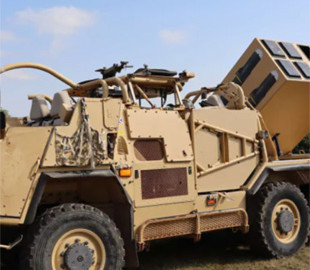According to journalists, the idea was to place a Brimstone eight-missile launcher on the Supacat HMT. Similar improvised solutions have been used repeatedly in Ukraine.
Supacat and MBDA are developing a new Wolfram anti-tank vehicle with a land-based version of the air-to-surface Brimstone missile, a joint development that combines the mobility of the Supacat HMT 6×6 platform with the precision of the Brimstone missile system. Army Recognition writes about this.
The anti-tank vehicle is designed to provide mobile firepower against armored targets.
200% Deposit Bonus up to €3,000 180% First Deposit Bonus up to $20,000At the British technology forum DVD 2024, Wolfram demonstrated advanced capabilities.
The new development is an anti-tank vehicle that combines a Supacat HMT 6×6 special vehicle equipped with a Brimstone missile launcher module. The main idea was to place the Brimstone eight-missile launcher on the Supacat HMT. New development — this is the possibility of a mobile strike against ground targets. Brimstone — the air-to-ground missile used for ground attacks has been adapted, in particular, to combat enemy armored vehicles. The authors of the publication drew attention to the fact that the rocket is used in Ukraine. In May 2022, Great Britain sent a number of Brimstone missiles to Ukraine, where they were installed on improvised vehicles.
Brimstone missile
Brimstone — an air-to-surface and surface-to-surface missile of British development. First of all, it is intended for accurate strikes on ground targets. It was deployed in several conflicts by the armed forces of Britain, Saudi Arabia, Germany and, most recently, Ukraine.
- Brimstone weight — about 50 kg;
- length — 1.8 meters;
- a tandem cumulative warhead weighing 6.3 kg is designed to hit armored targets;
- the missile is powered by a solid-fuel rocket engine that accelerates the projectile to supersonic speed — about Mach 1.3, or 450 m/s;
- sophisticated guidance system includes active 94GHz millimeter-band radar and inertial navigation system (INS);
- error — less than one meter.

